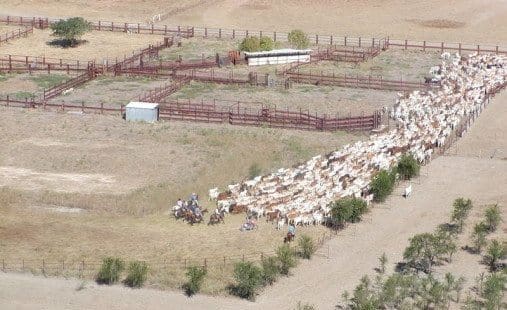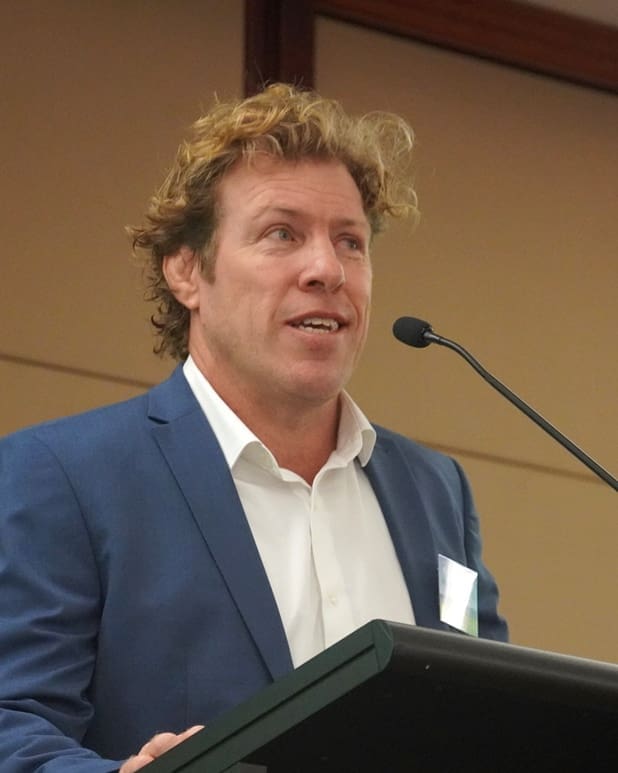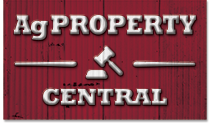
Brahman cattle in a set of yards on Benmara
MORE than two million hectares of grazing land is currently being marketed in the Northern Territory, but so far it has been slow on the sales front, with only two pastoral leases changing hands in the last 12 months.
In October, the 559,500ha Murray Downs Station, 195km south of Tennant Creek, sold to Clermont’s Richard and Dyan Hughes and family for $46.5 million on a walk-in walk-out basis including 10,000 breeders (or $27.5m bare).
And in June last year, the 64,700ha Woolner Station, 150km east of Darwin, was purchased by Rallen Australia (owned by the Langhoven family) for $49 million bare.
In this week’s property review, specialists (including those attending last week’s NT Cattlemens Association conference in Darwin) give their insights into the current state of the NT market.
Alison Ross, Elders
Katherine-based Elders agent Alison Ross reports buyers are in the market and despite financial and political uncertainties, there is an appetite for debt.
“Historically, buyers from Queensland and New South Wales come to the Territory to chase feed. However, this season, there has been some decent rain which may have deferred interest,” she said.

Alison Ross
Despite the large number of agricultural properties on the market at present, Ms Ross remains confident about the outlook.
“I have been working in the property space for 24 years and everything cycles. Domestic inquiry will continue to dominate because NT land is still regarded as cheap on an adult equivalent basis, compared with the eastern states and there will always be a demand for protein, particularly beef from Northern Australia.”
Ms Ross said in recent years, high prices had been paid for a number of pastoral leases and carbon projects, and some vendors believed that was where the market is still at.
“As we are seeing, properties aren’t selling. Supply and demand drives price and this could result in a price adjustment, however most vendors are happy to continue operating until the market meets their expectations.”
Despite the slow-moving market, Ms Ross reports steady interest across the board, with irrigation and water attracting strong inquiry.
Ms Ross believes the appointment of a Northern Territory government coordinator will also influence the property market.
Last week, the NT Parliament appointed chief minister Lia Finocchiaro to potentially override dozens of laws in a bid to fast-track private investment in land.
“Buyer demand has changed overnight following the election of the new NT Country Liberal Party. People are happier to invest due to upcoming changes in red tape, including land clearing, water licencing and road infrastructure development,” Ms Ross said.
Olivia Thompson, LAWD
Katherine-based LAWD agent Olivia Thompson acknowledges there are plenty of NT properties listed for sale, but points out there have never been so many developed landholdings on the market.
When the 2027ha Kingfisher Station in the Douglas Daly region changed hands in 2020, it was partially developed. Under the ownership of Wee Waa cotton farmer Jim Miller, 90 percent has now been cleared and developed to cotton, with substantial investment in upgrading the infrastructure including the installation of bores and irrigation pivots.
The 29,330ha King River Station, 40km south-east of Katherine, is another property that has returned to the market with extensive improvements. These include new water infrastructure, fencing, laneways and a $700,000 certified dip allowing for the processing of livestock to meet the health requirements of other markets.

Olivia Thompson
Ms Thompson said vendors are listing for various reasons, including settling an estate, retiring or enabling succession.
“It has nothing to do with where property prices are presently sitting. I haven’t heard anyone say the market is going backwards and that is their reason for selling.”
She said property ownerships are also changing.
“Institutional capital is trumping everyone, particularly if it involves scale. These investors are able to add value to their portfolios, particularly if they aggregate several properties in the same area.”
Ms Thompson believes the NT is competitively priced for interstate producers who can purchase an established business offering scale and the ability to run large herds.
Last year, Clermont’s Richard and Dyan Hughes and family made their first foray into the NT purchasing the 559,500ha Murray Downs Station.
It followed in the footsteps of another Central Queensland family, the Pickersgills who purchased the 447,500ha Murrunji Station, south-west of Daly Waters, and the 460,900ha Neutral Junction near Barrow Creek.
Ms Thompson said Queensland producers seeking additional breeder country viewed the Northern Territory as exceptional value.
“The recently listed, adjoining 232,900ha Moroak and Goondooloo Stations, 70km from Mataranka and 160km east of Katherine, have already attracted good interstate inquiry.”
Anticipated to raise north of $50 million, the well-established, large-scale breeding enterprise offers a 25,000 adult equivalent carrying capacity, equating to one AE/9ha.
The 67,500ha Dorisvale Station, a Top End cattle breeding property offering dryland farming potential, is attracting a similar level of inquiry from interstate producers.
LAWD has recently observed in Queensland, some smaller properties under 4000ha in better country are achieving values of $14,000 to $20,000 per beast area, with larger properties performing just as strongly, with some reaching up to $14,000 per beast area.
Ms Thompson said the impressive market activity is now drawing attention to the Northern Territory, where properties in the Top End, currently sitting at around $2000 per beast area, represent exceptional value and strong future potential.
“When the cattle market peaked in 2023 and then fell away, buyer confidence followed. New forecasts should encourage buyers to step forward with confidence and this should translate into sales.”
Ms Thompson said there was value in buying land that is cleared because it can be difficult to obtain clearing permits.
“A property offering a water licence is also attractive, even in a high rainfall region like the Douglas Daly. Some of those farmers might only use 3ML to finish off their cotton crop, making it a very affordable crop.”
Ms Thompson said many NT properties were located in safe and reliable rainfall regions and offered diversity, including carbon cotton opportunities.
“Hay farms are also in demand. The NT has 220 cattle stations and there are around 27 hay farms which means growers can’t keep up with orders.”
Potential price correction
A delegate at last week’s NTCA conference in Darwin told Beef Central, the Northern Territory property market could experience a price correction after external forces, including carbon money, drove prices up.
Previously, he said, it appeared banks were lending money on the back of the increase in land values and not on the actual returns of the business.
“Today, producers that purchased land through the peak period will be struggling to pay down debt off the back of the drop in the cattle market, and on top of killer input costs that were hit with inflation running at six percent in recent years.”
He said producers’ returns on investment are being ripped from under them.
“In 2021/2022 the cattle market was riding high at around high $4kg to $5kg live export, but that was never going to hang around and now prices have come back to roost. As a knock-on effect, where are property prices going to land?”
The delegate questioned where capital would come from to fund future acquisition activity.
“There is plenty of money out there but will it come from carbon players, institutional investors, corporate agriculture, superannuation funds or international stakeholders?”
“While the cattle market and country look good, will it be enough to entice investors to park money here given that Australian agriculture is a long-term investment?”
“With United States President Donald Trump trying to attract investment, potential investors may be happy to hold off, calculate the impact on their return, and reconsider their acquisition activity in six months time.”
Frank Peacocke, HTW
Darwin-based Herron Todd White valuer Frank Peacocke said there had always been a significant value gap between the Northern Territory and Queensland.
“During my 25 years in the Territory, the gap has definitely narrowed. Many Queenslanders believe the NT is still reasonable value on a beast per area basis. South Australians looking at Central Australia have also viewed it is as being relatively cheap breeding country compared to what they have.”

Frank Peacocke HTW
Mr Peacocke said while the property market has definitely slowed, a variety of people and groups are still looking to buy.
“Interested parties will probably step up to the plate once they get a handle on current value level. For now, particularly given there has not been a station sale up here in the northern half since October 2023, they are just waiting for someone to break away, like a racer breaking from the peloton.”
“This may or may not prove how far they are willing to go with one of these stations currently on the market, create a benchmark of sorts and then the rest will make of the sale what they will.”
Mr Peacocke said it may be the impetus to get the ball rolling again with more definite or final offers drawing a line in the sand for the station they are seeking.
“It feels like we are in that kind of space at the moment, where potential buyers are coming to terms with a point in the market’s cycle. In particular, for secondary type properties, which are the ones currently on the market.”
He said some overseas investors appeared not to fully grasp the concept of productivity over a range of country types on a cattle station.
“They seem to be looking at the area of a pastoral lease with the certainty of someone looking at a 100sq m office floorspace. Yes, you may have a 1000sq km pastoral footprint, but more than likely it will be vastly different from the 1000sq km pastoral footprint 200km down the road (if there were such a thing) where the balance of country types are completely different.”
Mr Peacocke said these people needed to assess the carrying capacity of each pastoral footprint and compare them.
“On top of that is land condition which could potentially alter the carrying capacity even further. Unless you have two 1000sq km pastoral footprints that are generally homogenous, a dollar per square kilometre won’t give the accuracy needed to make a decision.”
Mr Peacocke encouraged potential buyers to carry out due diligence.
“It is a critical factor when purchasing a pastoral lease. There have been some circumstances where the purchaser’s expectations of productive carrying capacity have been stretched to the absolute limit. In the long run, an independent assessment is cheap due diligence.”
NT properties currently listed for sale
- 447,500ha Murrunji Station, south-west of Daly Waters, and the 460,900ha Neutral Junction near Barrow Creek, 150km south of Tennant Creek, are breeding operations running around 20,000 head of cattle.
- 451,177ha Benmara situated in the Barkly Tablelands region, east of Cresswell and Newcastle Waters and 100km west of the Queensland/Northern Territory border.
- 147,510ha Aroona, 90km south-west of Katherine, is a well-developed breeding and backgrounding property in the Upper Victoria River district.
- 142,700ha Moroak and the 90,200ha Goondooloo Stations, in the Roper River region, 70km from Mataranka and 160km east of Katherine, together are a well-established, large-scale breeding operation.
- 2970ha Victoria Downs, 108km south of Darwin and 166km from Katherine, is a live export holding and dryland cropping opportunity in the Adelaide River region.
- 2027ha Kingfisher Station, 98km Katherine, is suited to cropping (cotton, horticulture & intensive fodder production) and dryland cropping and/or grazing.
- 5304ha Rocktear Park, 35km south of Katherine, is a hay supplier in the Venn region, with more than 2800ha cleared for expanding crop or livestock ventures.
- 29,330ha King River Station, 40km south-east of Katherine, is a breeding or cattle trading block with a permit to clear and grow some hay and dryland crops.
- 67,500ha Dorisvale Station, 350km south-west of Darwin, is a breeding property offering dryland farming potential.
- 9620ha Edith Springsand neighbouring 3336ha Tarwoo Station, adjacent to the new cotton gin and 30km south-east of Katherine, is a cattle breeding enterprise offering potential buyers irrigation and feedlot potential.
- 238,435ha Orange Creek Station, 85km south of Alice Springs, is a breeding operation. The 135ha Orange Creek Hay Farm, 5km north of Orange Creek Station, is a complementary freehold block producing fodder to support and finishing on the Orange Creek Station feedlot.

HAVE YOUR SAY